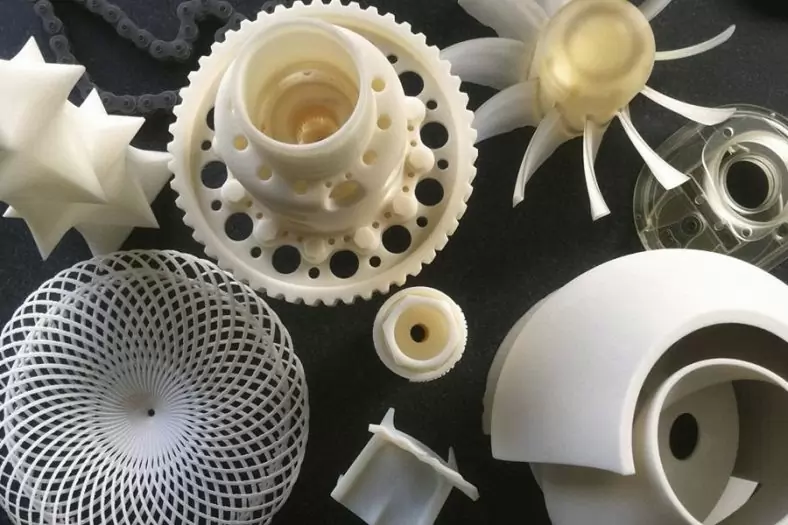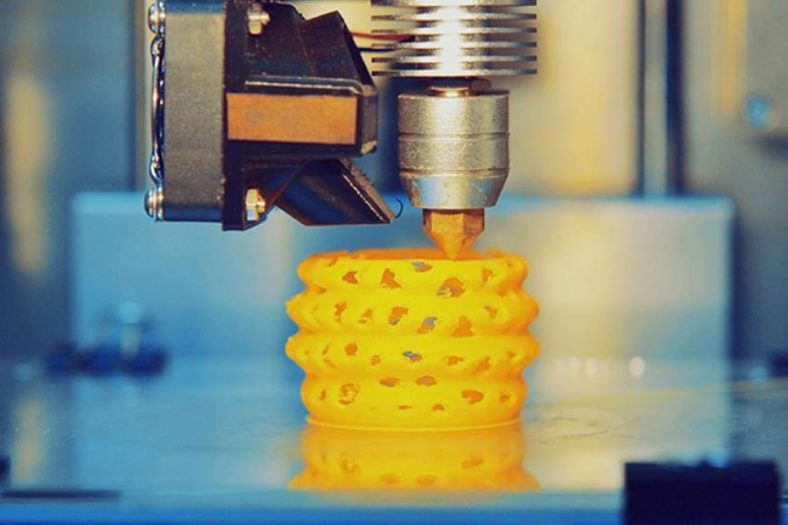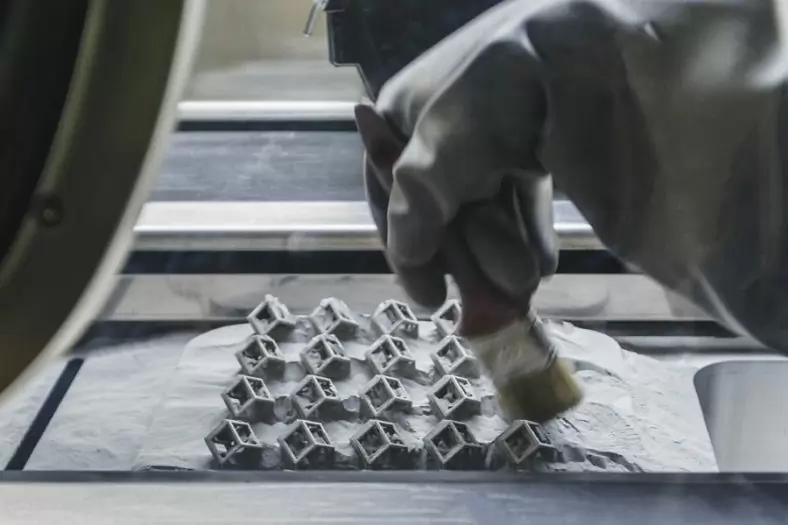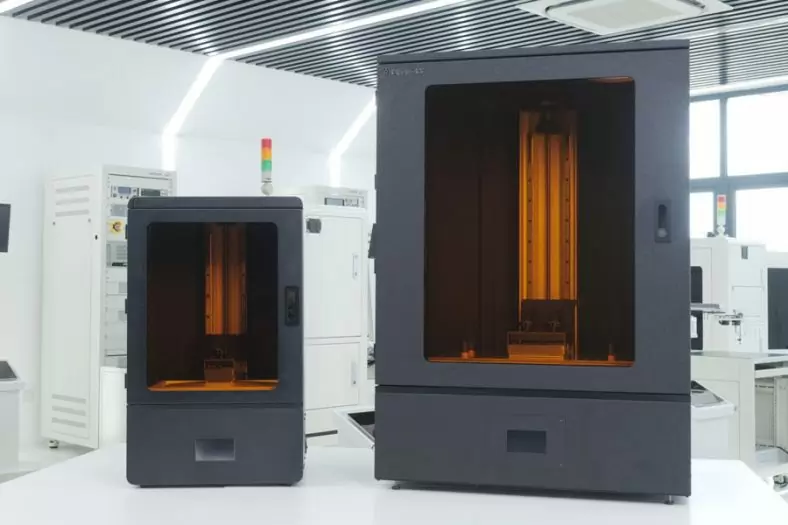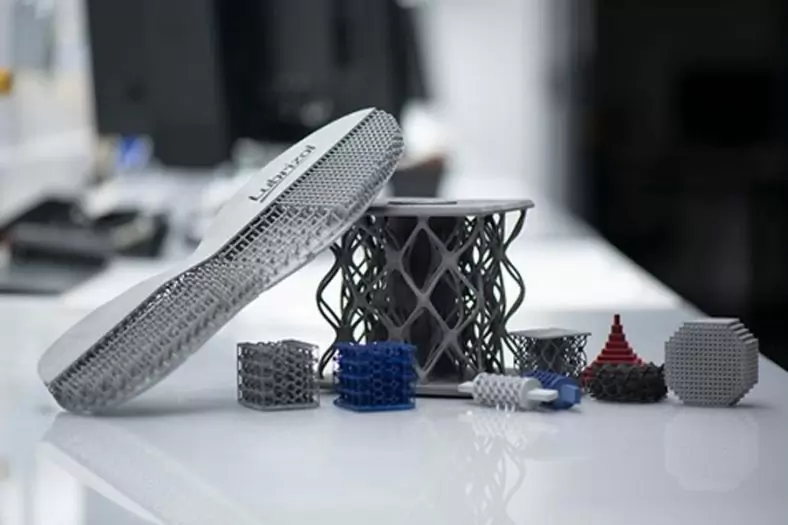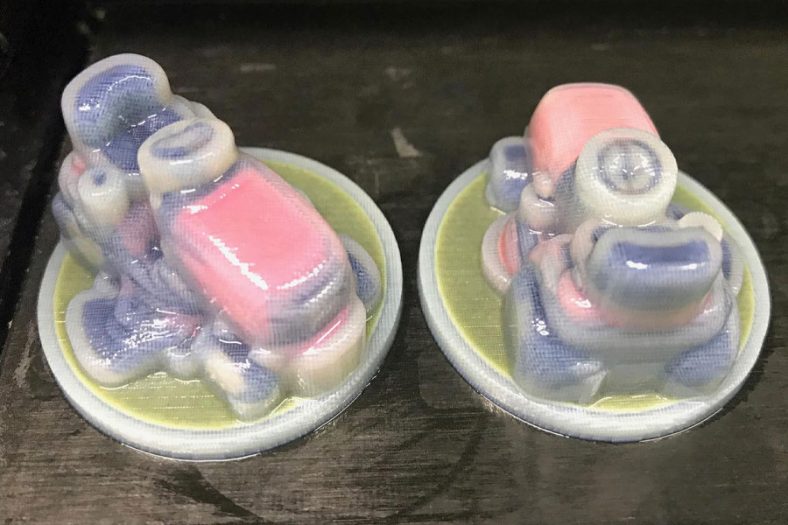
3D printing, also known as additive manufacturing, has revolutionized the way products are designed and manufactured. This technology allows for the creation of complex geometries and bespoke designs with unparalleled precision and flexibility. As 3D printing becomes more widespread across various industries, understanding the cost implications of this technology has become increasingly important. One critical aspect of cost analysis in 3D printing is the cost per gram of material used.Cost per gram is a straightforward yet vital metric that provides insight into the financial feasibility of 3D printing projects. It helps businesses and hobbyists alike to evaluate the economic aspects of their prints, ensuring that the production process remains within budgetary constraints.
This metric is particularly relevant when comparing 3D printing with other manufacturing methods, such as CNC machining or injection molding, where material costs also play a significant role.In this article, we will delve into the various factors that influence the cost per gram in 3D printing. We will explore the different types of 3D printing technologies, the materials commonly used, and how these elements contribute to the overall cost.
Additionally, we will examine the methods for calculating the cost per gram, taking into account both direct material costs and overheads such as energy consumption and labor. Through case studies and comparisons with other manufacturing methods, we will provide a comprehensive understanding of how to manage and optimize costs in 3D printing.As 3D printing continues to evolve, new materials, technologies, and methods are emerging, which may further impact the cost per gram. This article will also look into future trends and the potential for cost reductions as the industry advances. By the end of this discussion, readers will have a thorough understanding of how to approach cost management in 3D printing and make informed decisions that align with their production goals.
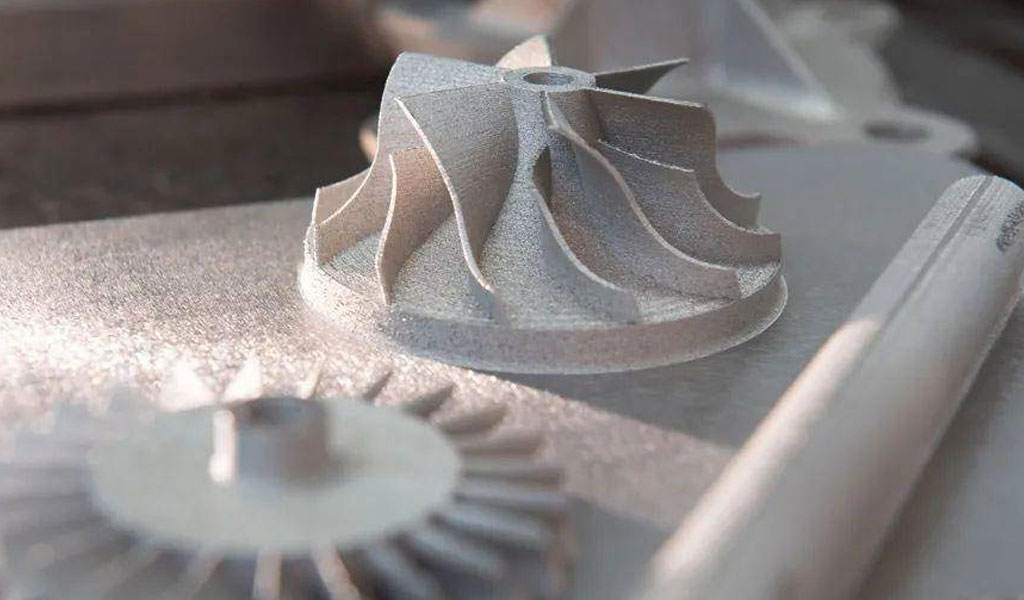
Fundamentals of 3D Printing
3D printing, or additive manufacturing, is a transformative technology that enables the creation of three-dimensional objects by adding material layer by layer. This process contrasts with traditional subtractive manufacturing methods, such as CNC machining, where material is removed to create the final product. The fundamentals of 3D printing encompass a variety of processes, materials, and workflows, each offering unique advantages and applications.
3D printing encompasses several distinct processes, each with its own methodology and suitable materials. The choice of process depends on factors such as the desired material, resolution, strength, speed, and cost. Below is an overview of the most common 3D printing processes:
Fused Deposition Modeling (FDM)
Fused Deposition Modeling (FDM) is one of the most widely used 3D printing processes, particularly popular among hobbyists and small businesses. In FDM, a thermoplastic filament is heated to its melting point and extruded through a nozzle, which deposits the material layer by layer onto a build platform. As each layer cools and solidifies, the object takes shape.
- Materials: PLA, ABS, PETG, TPU, and other thermoplastics.
- Applications: Prototyping, functional parts, and educational projects.
- Advantages: Cost-effective, easy to use, and a wide range of materials.
- Disadvantages: Lower resolution and surface finish compared to other processes, limited material strength for some applications.
Stereolithography (SLA)
Stereolithography (SLA) is a photopolymerization process that uses a laser to cure liquid resin into solid plastic. The laser selectively hardens the resin, layer by layer, until the object is fully formed. SLA is known for its high-resolution prints and smooth surface finishes, making it ideal for applications requiring fine details.
- Materials: Photopolymer resins.
- Applications: Dental models, jewelry, detailed prototypes, and artistic creations.
- Advantages: High resolution, excellent surface finish, and suitable for detailed work.
- Disadvantages: Resin materials can be costly, and post-processing is often required to remove supports and cure the final product.
Selective Laser Sintering (SLS)
Selective Laser Sintering (SLS) is a powder bed fusion process where a laser selectively fuses powdered material to form a solid object. The unfused powder supports the object during printing, eliminating the need for additional support structures. SLS is particularly valued for its ability to produce strong and durable parts.
- Materials: Nylon, polyamide, thermoplastic elastomers, and metal powders.
- Applications: Functional prototypes, aerospace components, and medical devices.
- Advantages: Strong and durable parts, no need for support structures, and good material properties.
- Disadvantages: Higher cost compared to FDM and SLA, and the need for post-processing to remove excess powder.
Digital Light Processing (DLP)
Digital Light Processing (DLP) is similar to SLA in that it uses photopolymerization to cure resin. However, instead of using a laser, DLP uses a digital light projector to flash an entire layer at once, making the process faster than SLA. DLP is also known for producing high-resolution parts with excellent surface finishes.
- Materials: Photopolymer resins.
- Applications: Jewelry, dental models, and detailed prototypes.
- Advantages: High resolution, faster than SLA, and good surface finish.
- Disadvantages: Limited build volume and higher material costs.
Binder Jetting
Binder Jetting involves depositing a liquid binding agent onto a powder bed layer by layer, bonding the particles together to form a solid object. The process is versatile and can work with a wide range of materials, including metals, ceramics, and even sand.
- Materials: Metal powders, sand, ceramics, and gypsum.
- Applications: Metal casting patterns, full-color prototypes, and architectural models.
- Advantages: Wide range of materials, full-color capabilities, and large build volumes.
- Disadvantages: Parts are typically brittle and require post-processing, such as sintering or infiltration, to achieve full strength.
Material Jetting
Material Jetting is akin to 2D inkjet printing, but in 3D. Droplets of photopolymer material are jetted onto the build platform and cured using UV light. Multiple materials can be jetted simultaneously, allowing for the creation of multi-material and multi-color parts.
- Materials: Photopolymers.
- Applications: Prototypes, anatomical models, and full-color parts.
- Advantages: High resolution, multi-material capabilities, and full-color printing.
- Disadvantages: High material cost and complex machines.
Direct Metal Laser Sintering (DMLS) and Selective Laser Melting (SLM)
DMLS and SLM are powder bed fusion processes that create metal parts by fusing metal powders using a laser. DMLS typically operates slightly below the metal’s melting point, while SLM fully melts the powder, allowing for the creation of highly dense metal parts.
- Materials: Titanium, aluminum, stainless steel, and other metal alloys.
- Applications: Aerospace components, medical implants, and high-performance engineering parts.
- Advantages: Produces fully functional metal parts with excellent mechanical properties.
- Disadvantages: High cost of machines and materials, and complex post-processing.
Types of Materials Used in 3D Printing
The choice of material is crucial in 3D printing as it directly influences the properties, appearance, and cost of the final product. Different processes accommodate different types of materials, each offering unique characteristics.
Thermoplastics
Thermoplastics are the most commonly used materials in 3D printing, especially in FDM processes. They are characterized by their ability to be melted and re-solidified multiple times without significant degradation.
- PLA (Polylactic Acid): PLA is a biodegradable thermoplastic derived from renewable resources like cornstarch. It is easy to print, offers a smooth surface finish, and is available in a wide range of colors.
- ABS (Acrylonitrile Butadiene Styrene): ABS is known for its strength, toughness, and heat resistance, making it ideal for functional parts and prototypes.
- PETG (Polyethylene Terephthalate Glycol): PETG is a versatile material combining the ease of printing of PLA with the strength and durability of ABS. It is also resistant to chemicals and moisture.
- TPU (Thermoplastic Polyurethane): TPU is a flexible and elastic material, often used for parts that require impact resistance or flexibility, such as phone cases or gaskets.
Photopolymers
Photopolymers are liquid resins that cure into solid plastic when exposed to light, typically used in SLA and DLP processes. They offer high resolution and smooth surface finishes but are generally more expensive than thermoplastics.
- Standard Resins: Used for general-purpose applications with good detail and surface finish.
- Tough Resins: Designed to withstand mechanical stress, these resins offer improved impact resistance.
- Flexible Resins: These resins produce parts that are bendable and stretchable, suitable for applications requiring flexibility.
- Dental and Medical Resins: Specialized resins for creating dental models, surgical guides, and other medical devices.
Metal Powders
Metal powders are used in processes like SLS, DMLS, and SLM to create metal parts with high strength and durability. These materials are often employed in industries that demand robust components, such as aerospace, automotive, and medical.
- Aluminum: Lightweight and strong, aluminum is commonly used in aerospace and automotive applications.
- Stainless Steel: Offers excellent strength and corrosion resistance, ideal for mechanical parts and medical implants.
- Titanium: Known for its high strength-to-weight ratio and biocompatibility, titanium is often used in aerospace and medical implants.
Ceramics
Ceramics are used in specialized 3D printing processes like Binder Jetting. They are valued for their heat resistance, hardness, and electrical insulation properties.
- Alumina: Commonly used in electronic substrates and thermal management applications.
- Zirconia: Offers high strength and fracture toughness, suitable for medical implants and cutting tools.
Composites
Composite materials combine a matrix material with reinforcing fibers or particles to achieve enhanced properties. In 3D printing, composites often include carbon fiber, glass fiber, or metal particles within a thermoplastic matrix.
- Carbon Fiber Reinforced Polymers: Known for their high strength and stiffness, these materials are used in aerospace, automotive, and sporting goods.
- Glass Fiber Reinforced Polymers: Similar to carbon fiber composites but generally more affordable, used in a variety of industrial applications.
Basic Workflow of 3D Printing
The 3D printing process, regardless of the specific technology or material used, follows a general workflow that includes the following key steps:
- Design:The process begins with the creation of a 3D model using Computer-Aided Design (CAD) software. The model can be an original design or a downloaded file from a 3D model repository. The design phase is crucial as it determines the final shape, dimensions, and structural integrity of the printed object.
- Slicing:Once the 3D model is complete, it must be converted into a format that the 3D printer can understand. This is done using slicing software, which slices the 3D model into horizontal layers and generates a path for the printer to follow. The slicing software also allows the user to adjust settings such as layer height, print speed, and infill density.
- Printing:After the slicing process, the file is uploaded to the 3D printer, and the printing process begins. The printer follows the path generated by the slicing software, depositing or curing material layer by layer until the object is complete. Depending on the size and complexity of the object, this process can take anywhere from a few minutes to several hours.
- Post-Processing:Once printing is complete, the object may require post-processing. This can include removing support structures, sanding, painting, or additional curing for resin-based prints. Post-processing enhances the final appearance and functional properties of the printed object.
- Quality Control:The final step is to inspect the printed object for defects, such as layer misalignment, warping, or incomplete fusion of layers. Quality control ensures that the object meets the desired specifications and is ready for its intended use.
Factors Influencing Cost Per Gram
The cost per gram in 3D printing is influenced by a variety of factors, including the type of material used, the technology and printer type, energy consumption, and labor and operational costs. Each of these elements plays a significant role in determining the overall cost and can vary widely depending on the specific application, industry, and requirements of the print.
Material Costs
Material costs are one of the most significant factors influencing the cost per gram in 3D printing. The type of material selected not only affects the quality and properties of the final product but also has a direct impact on the overall cost of production.
Breakdown of Common Materials and Their Average Costs per Kilogram
Different 3D printing materials come with varying price points, largely determined by their properties, availability, and the complexity of their production. Below is a breakdown of some of the most common materials used in 3D printing, along with their average costs per kilogram:
- PLA (Polylactic Acid): PLA is one of the most affordable and widely used materials in 3D printing, particularly in FDM processes. It is typically priced between $20 to $30 per kilogram. PLA is biodegradable, easy to print, and available in a wide range of colors, making it popular for prototypes and consumer products.
- ABS (Acrylonitrile Butadiene Styrene): ABS is slightly more expensive than PLA, with prices ranging from $25 to $40 per kilogram. It is known for its strength, durability, and resistance to high temperatures, making it suitable for functional parts and industrial applications.
- PETG (Polyethylene Terephthalate Glycol): PETG is priced between $30 to $50 per kilogram and is valued for its strength, chemical resistance, and ease of printing. It offers a balance between the ease of PLA and the strength of ABS, making it versatile for a wide range of applications.
- TPU (Thermoplastic Polyurethane): TPU is a flexible material that is typically priced between $50 to $70 per kilogram. It is used in applications requiring elasticity and impact resistance, such as protective cases and gaskets.
- Nylon: Nylon, often used in SLS printing, is known for its strength and flexibility. It is priced between $50 to $75 per kilogram, making it more expensive than standard thermoplastics. Nylon is commonly used in engineering applications and functional prototypes.
- Resins (SLA/DLP): Photopolymer resins used in SLA and DLP processes are generally more expensive than thermoplastics, with prices ranging from $80 to $150 per kilogram. The cost varies depending on the specific type of resin, such as standard, tough, or flexible resins.
- Metal Powders (SLS/DMLS/SLM): Metal powders are among the most expensive materials used in 3D printing. Prices can range from $100 to $600 per kilogram, depending on the metal. For example, aluminum powders may cost around $100 to $150 per kilogram, while titanium powders can range from $300 to $600 per kilogram. These materials are used in high-performance applications such as aerospace and medical implants.
Cost Variations Based on Material Properties
Material costs can vary significantly based on their specific properties, such as strength, flexibility, heat resistance, and biocompatibility. Materials with specialized properties often come at a premium due to the complexity of their production and their limited availability.
- Strength and Durability: Materials like ABS, PETG, and Nylon are priced higher than PLA due to their enhanced strength and durability. These materials are often selected for functional prototypes and end-use parts where mechanical properties are critical.
- Flexibility: Flexible materials like TPU and flexible resins command higher prices due to their specialized applications. These materials are essential for parts that require elasticity and impact resistance but are generally more expensive to produce.
- Heat Resistance: Materials with high heat resistance, such as ABS and certain engineering-grade resins, are typically more expensive. These materials are crucial for applications that require parts to withstand high temperatures, such as automotive components.
- Biocompatibility: Medical-grade materials, such as certain resins and metal powders, are designed to be biocompatible and are often used in medical implants and devices. These materials are usually more expensive due to the stringent manufacturing standards and certifications required.
Printer Type and Technology
The type of 3D printer and the technology it employs significantly impact the cost per gram of the printed object. Different 3D printing technologies vary in their efficiency, precision, speed, and material usage, all of which contribute to the overall cost.
Impact of Different 3D Printing Technologies on Cost
Each 3D printing technology has inherent characteristics that influence the cost per gram, including the amount of material used, the speed of printing, and the level of detail achievable. Here’s how some of the main technologies compare:
- Fused Deposition Modeling (FDM): FDM is generally considered the most cost-effective 3D printing technology, especially for low-volume production and prototyping. The cost per gram is relatively low due to the affordability of thermoplastics like PLA and ABS. However, FDM may require additional material for support structures, which can slightly increase the cost.
- Stereolithography (SLA): SLA produces high-resolution prints but at a higher cost per gram due to the expensive photopolymer resins used. The technology is well-suited for applications requiring fine details, but the need for post-processing and the cost of resin can make it more expensive than FDM.
- Selective Laser Sintering (SLS): SLS is typically more expensive than FDM but offers superior strength and durability in printed parts. The lack of need for support structures and the ability to print complex geometries make it cost-effective for certain applications, although the material cost per gram is higher due to the use of specialized powders like nylon or metal.
- Digital Light Processing (DLP): DLP, similar to SLA, offers high-resolution prints but with faster print times. The cost per gram is comparable to SLA, with the primary expense being the photopolymer resin. DLP is ideal for detailed, small parts but may not be cost-effective for larger volumes due to material costs.
- Direct Metal Laser Sintering (DMLS) and Selective Laser Melting (SLM): These technologies are among the most expensive in terms of cost per gram, as they use high-cost metal powders and require sophisticated equipment. However, they are essential for producing fully functional metal parts with excellent mechanical properties, making them cost-effective in high-performance applications.
Analysis of Cost Efficiency in Different Types of 3D Printers
The efficiency of a 3D printer in terms of material usage, speed, and maintenance can significantly influence the cost per gram. Here are some considerations:
- Material Usage Efficiency: Printers that minimize waste, such as SLS printers that reuse unsintered powder, tend to be more cost-efficient despite higher material costs. In contrast, FDM printers may produce more waste due to support structures, which can increase the cost per gram.
- Print Speed: Faster printers can reduce labor costs and increase productivity, making them more cost-efficient for large-scale production. However, faster printing speeds may require higher energy consumption and lead to increased wear on the printer, potentially raising operational costs.
- Maintenance and Calibration: Regular maintenance and calibration are necessary to ensure optimal printer performance. Some printers require more frequent maintenance or use components that wear out quickly, increasing operational costs and affecting cost per gram.

Cost Calculation Methods
Accurately calculating the cost per gram in 3D printing involves more than just determining the price of the raw materials.
It requires a comprehensive approach that takes into account direct material costs, overhead expenses such as energy consumption and labor, and the wear and tear on the equipment. Below, we’ll explore various methods for calculating these costs, including the use of software tools to simplify the estimation process.
Direct Material Cost Calculation
The direct material cost is the most straightforward component of cost per gram in 3D printing. It involves determining how much material is used to create a part and multiplying this by the cost of the material. Here’s a step-by-step guide to calculating the material cost per gram.
Step-by-Step Guide on Calculating Material Cost Per Gram
- Determine the Material Weight:The first step is to determine the weight of the material used for the print. Most 3D printing slicing software provides an estimate of the material weight after slicing the 3D model. This weight is typically given in grams.
- Identify the Material Cost per Kilogram:Next, you need to know the cost of the material used. Material costs are usually provided in terms of price per kilogram. For example, PLA might cost $25 per kilogram, while more specialized materials like titanium powder could cost $300 per kilogram.
- Calculate the Cost per Gram:To find the cost per gram, divide the cost per kilogram by 1,000 (since there are 1,000 grams in a kilogram).
- Example Calculation: If the cost of PLA is $25 per kilogram: Cost per gram=25/100=$0.025/gram
- Multiply by the Material Weight:Multiply the cost per gram by the total weight of the material used for the print.
- Example Calculation: If the sliced model’s material weight is 100 grams and the cost per gram is $0.025: Material Cost=100×0.025=$2.50
This method gives you the direct material cost for producing a single 3D-printed part.
Including Overhead Costs
While direct material costs are a significant portion of the overall cost, overhead costs such as electricity, labor, and machine wear must also be accounted for to determine the true cost per gram. These overhead costs can vary widely depending on the printer, technology used, and operational efficiency.
Methods to Incorporate Overhead into Cost Per Gram
Energy Consumption Costs:
- Calculate Energy Usage: First, determine the power consumption of your 3D printer, usually measured in watts (W). Multiply the power consumption by the time required to print the part to find the total energy used.
- Convert to Kilowatt-Hours (kWh): Energy costs are typically measured in kilowatt-hours (kWh). Divide the total energy usage (in watts) by 1,000 to convert it to kilowatt-hours.
- Multiply by Electricity Rate: Multiply the kWh used by the cost per kWh charged by your energy provider to find the total energy cost.
- Example Calculation: If your printer uses 200W and the print takes 5 hours, the energy consumption is: Energy Consumption=(200×5)/100=1kWh;If the electricity cost is $0.12 per kWh: Energy Cost=1×0.12=$0.12
- Add to Material Cost: Add this energy cost to the material cost calculated earlier.
Labor Costs:
- Determine Labor Time: Estimate the amount of time spent setting up, monitoring, and post-processing the print. This could include tasks such as slicing the model, starting the print, removing the part, and any necessary finishing work.
- Calculate Labor Cost: Multiply the total labor time by the hourly wage rate to calculate the labor cost.
- Example Calculation: If an operator spends 1 hour on the process, and their hourly wage is $20: Labor Cost=1×20=$20
- Add to Material and Energy Costs: Combine this labor cost with the material and energy costs.
Machine Wear and Depreciation:
- Estimate Machine Depreciation: Divide the total cost of the 3D printer by its estimated useful life (in hours) to find the depreciation cost per hour of operation.
- Example Calculation: If a 3D printer costs $1,000 and has a lifespan of 5,000 hours: Depreciation Cost per Hour=1000/5000=$0.20/hour
- Calculate Cost for the Print: Multiply the depreciation cost per hour by the time taken to print the part.
- Example Calculation: For a print that takes 5 hours: Depreciation Cost=0.20×5=$1.00
- Add to Other Costs: Add this to the material, energy, and labor costs.
Summing All Costs:
Finally, add up the material cost, energy consumption, labor cost, and machine depreciation to find the total cost.
- Example Total Calculation: If the material cost is $2.50, energy cost is $0.12, labor cost is $20, and depreciation cost is $1: Total Cost=2.50+0.12+20+1=$23.62
- Divide by Material Weight: To find the cost per gram, divide the total cost by the material weight used in the print (in grams). For instance: Cost per Gram=23.62/100=$0.236/gram
This comprehensive method gives you a more accurate estimate of the cost per gram by incorporating all relevant overheads.
Software Tools for Cost Estimation
Manually calculating the cost per gram can be complex, especially when multiple factors are involved. Fortunately, several software tools are available to help automate and simplify the process.
Cura Cost Estimator Plugin:
Cura is a popular slicing software for FDM printers. The Cost Estimator plugin allows users to input material costs, electricity costs, and machine depreciation rates to automatically calculate the cost per print.
- Features: Integration with Cura, easy to use, supports various 3D printers.
- Best For: Hobbyists and small businesses using FDM printers.
PrusaSlicer:
PrusaSlicer, developed by Prusa Research, includes built-in cost estimation features. Users can enter material costs, electricity rates, and other factors to generate a detailed cost breakdown for each print.
- Features: Supports multiple materials, customizable settings, detailed reports.
- Best For: Users of Prusa 3D printers, as well as other compatible FDM printers.
Simplify3D:
Simplify3D is a professional slicing software with advanced cost estimation tools. It allows users to calculate costs based on material usage, print time, and additional overheads such as labor and energy consumption.
- Features: Highly customizable, supports multiple 3D printer brands, detailed cost analysis.
- Best For: Professionals and businesses needing detailed cost estimates.
Cost Calculator by AstroPrint:
AstroPrint offers an online cost calculator that allows users to input material costs, printer specifications, and other overheads to estimate the cost of a 3D print.
- Features: Cloud-based, user-friendly interface, supports various 3D printers.
- Best For: Users seeking a quick and simple cost estimation tool.
3DPrinterOS:
3DPrinterOS is a cloud-based platform that includes cost estimation tools as part of its comprehensive 3D printing management suite. It allows users to track material usage, calculate costs, and manage multiple printers from a single interface.
- Features: Cloud-based, supports multiple users and printers, integrated cost tracking.
- Best For: Enterprises and educational institutions managing multiple 3D printers.
Tinkerine Suite:
Tinkerine Suite is a slicing software designed for Tinkerine 3D printers, with built-in cost estimation features. Users can input material costs and other overheads to calculate the cost per print.
- Features: User-friendly interface, supports Tinkerine printers, basic cost estimation tools.
- Best For: Users of Tinkerine 3D printers.
Choosing the Right Tool
When selecting a cost estimation tool, consider the following factors:
- Printer Compatibility: Ensure the tool supports your specific 3D printer model and technology.
- Ease of Use: For beginners, a simple interface with basic cost estimation features may be sufficient. Advanced users may require more detailed customization options.
- Cost vs. Features: Evaluate whether the tool’s features justify its cost, particularly if you’re managing a large number of prints or printers.
- Integration with Existing Workflow: Consider whether the tool can be integrated into your existing 3D printing workflow, including file management and print scheduling.
The Detail Of BE-CU 3D Printing Company

BE-CU.COM offers online 3D printing services for rapid prototyping and production in volume. Our clients are across a wide variety of industries and companies, including automotive, construction, aerospace, defense, electronics, machinery, industrial automation, medical, healthcare, consumer production, oil & gas, etc. Accelerate your product development and manufacturing process with our industry-leading metal & plastic 3D printing service and 3D printed parts. We’ll find the best 3D printing solution for your projects, to lower your cost and shorten the lead time based on your needs, while maintaining the quality. From 3D prototyping to end-use parts production, multiple materials are available for custom 3D printing parts. Need an alternative to the traditional solution? Submit your 3D CAD file to get an online quotation quickly. Our 3D printing service ensures accuracy and speed. We can help you choose the most appropriate technology and material to match your applications or request.
-

3D Printed Inconel Exhaust Manifold
-
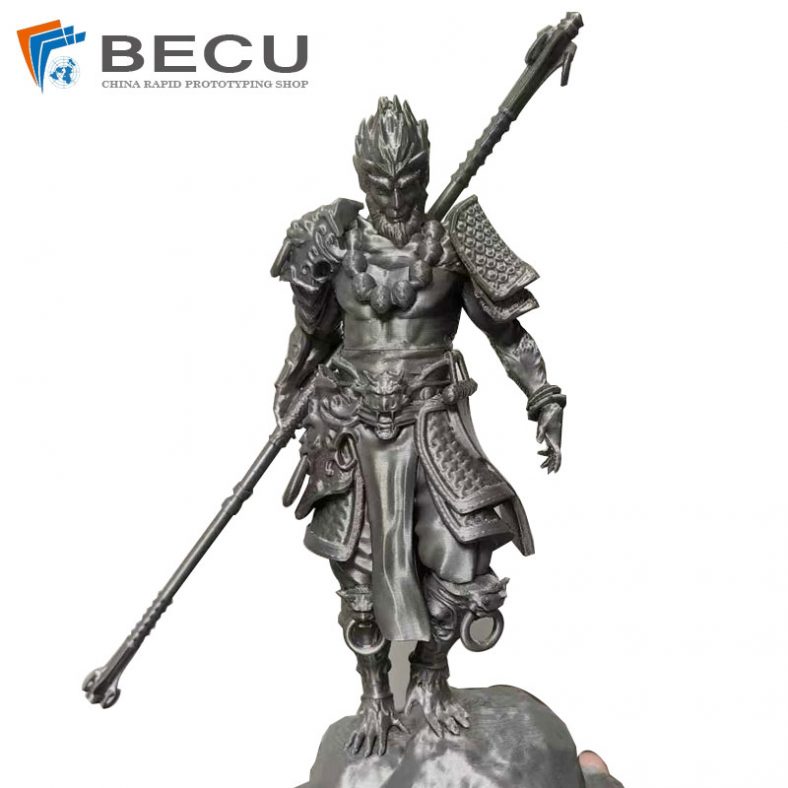
3D Printed Black Myth: Wukong Model
-
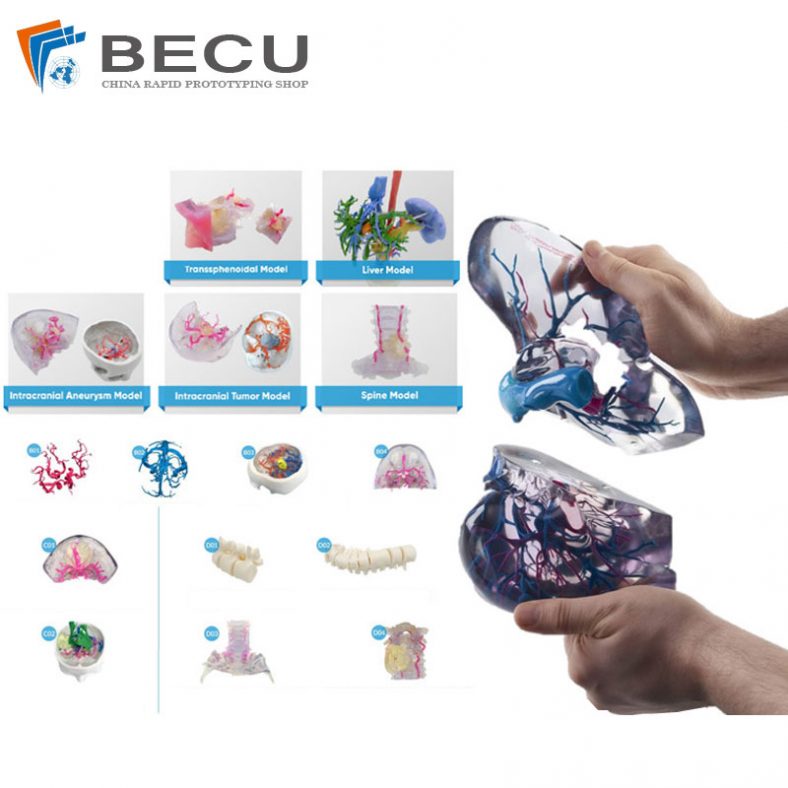
Omni-Directional Surgical Planning Medical Models
-

3D Printing Pool Pressure Cleaner Parts and Accessories
-
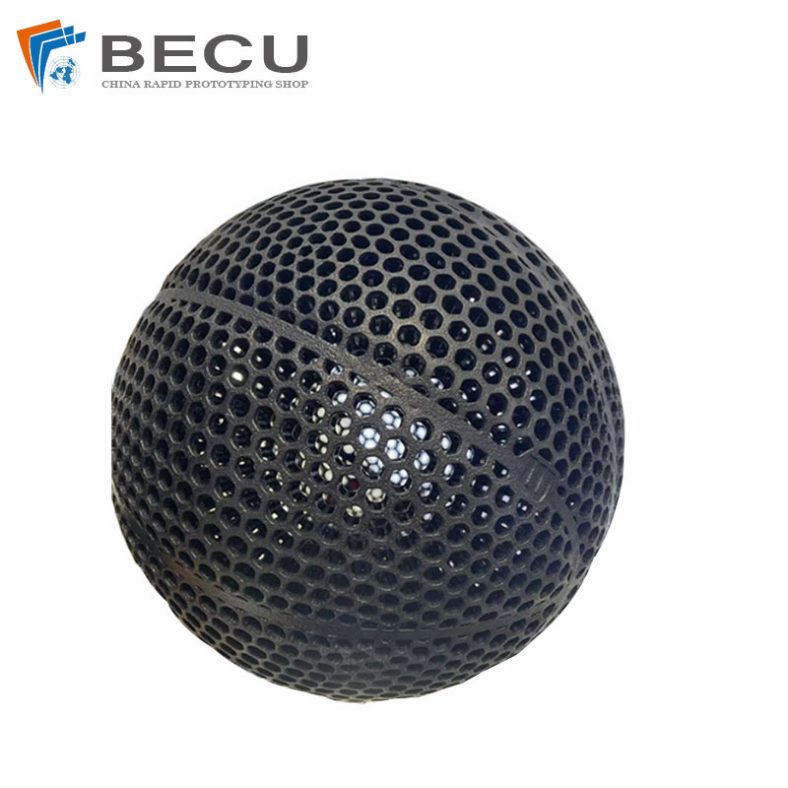
Nylon 3D Printed Size 5 Basketball
-
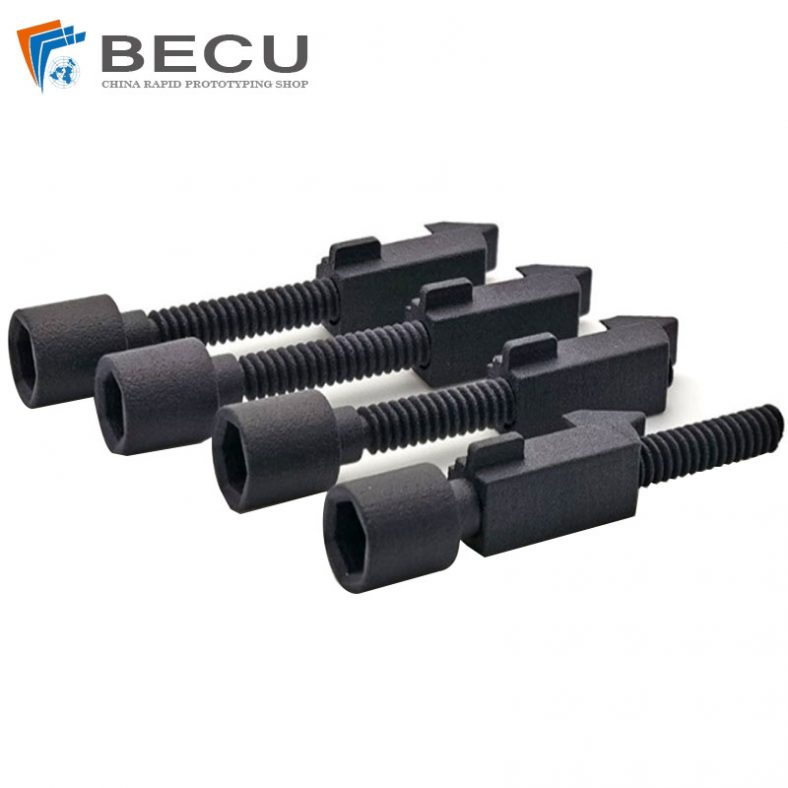
Black Nylon Medical Threaded Screw By MJF 3D Printing
-
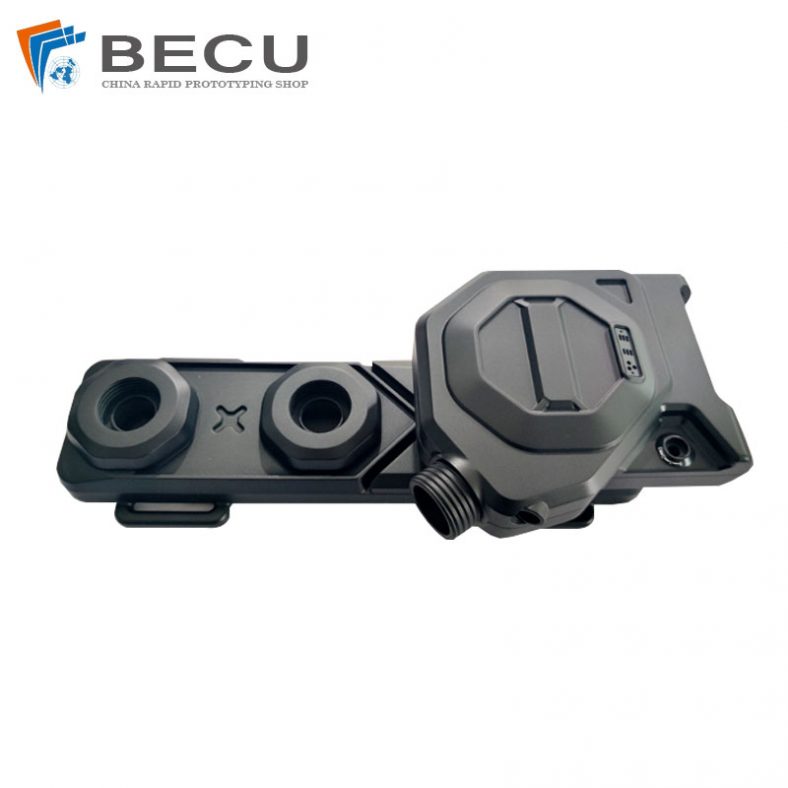
MJF 3D Printing Black Nylon Red Dot Sighting For Medical
-
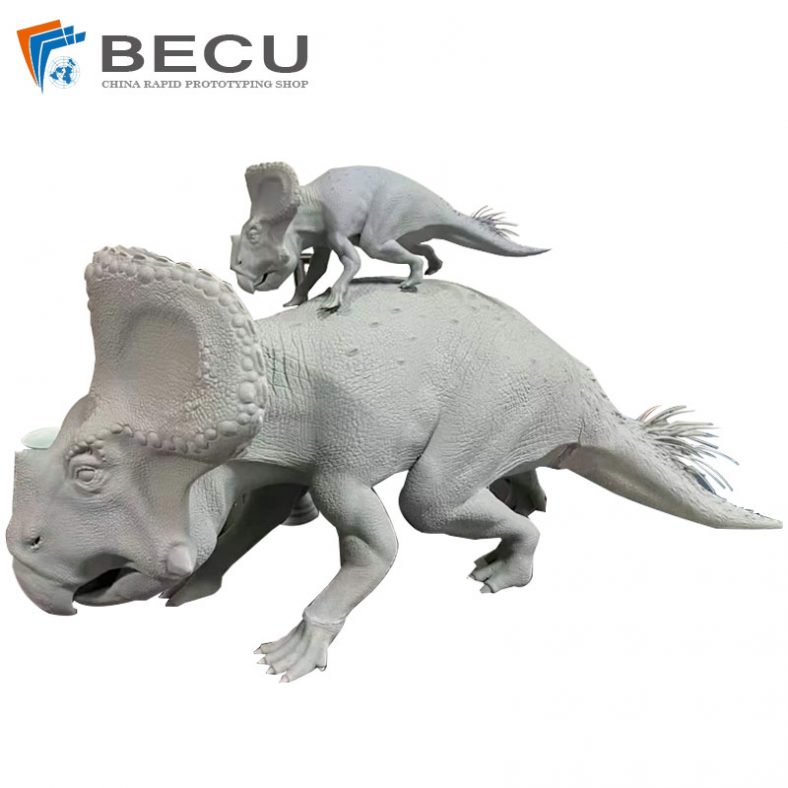
jetFusion 3D Printing Triceratops Mother and Child Sculpture

